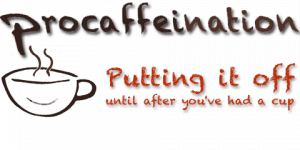Coffee is the world’s favorite addiction, and in this regard, Finland is number one. The average Finn consumes 26.5 lbs. (12 kg) of coffee per year. In fact, many of the Northern European countries are serious coffee consumers, with Norway (9.9 kg), Iceland (9.0 kg), Denmark (8.7 kg), and The Netherlands (8.4 kg) rounding out the Top 5. The US clocks in at 25th with 4.2 kg. It must be those long, dark winters. Although drinking coffee is one of my favorite pastimes, there are many useful things we can do with coffee other than pouring it down our throats.
Number 10: Skin Care
I wrote in-depth about coffee and skincare here.
The largest organ in the human body is not the brain or the stomach, it is the skin. Since coffee is full of beneficial nutrition and is the main source of antioxidants in the American diet, it can also be a fantastic addition to our skincare regimen. Green coffee extract is known for its high levels of the antioxidant, chlorogenic acid. Lucky for us, roasted coffee has it too.
Use the Grounds
Mixed with a beneficial plant oil, spent coffee grounds can be used to make an effective body scrub. Try avocado, almond, or grapeseed oil. How coarse the grind of the coffee is, determines how exfoliating the scrub is. The caffeine remaining in the grounds after brewing naturally stimulates circulation and tightens the skin. If you don’t feel like making your own you can just buy it from my wife!
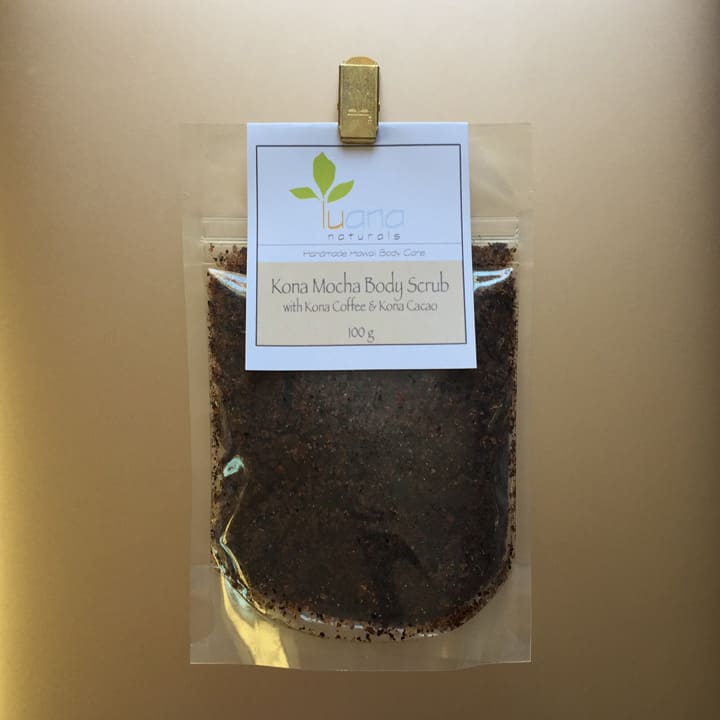
And those antioxidants? They may help prevent the effects of aging. Rumor has it that it is also good for getting rid of cellulite on our legs. In addition, evidence suggests that topical use might relieve the dry skin and itchiness of eczema. A good scrub might be just what we are looking for!
Number 9: In the Garden
Spent coffee grounds can be a wonderful amendment to our soil. It can improve loft and replenish the organic material plants use for nutrition. On top of that, just like us, worms love it! The grounds are the perfect size for our wriggly little friends to eat, digest, and (ahem) excrete. Worm castings are among the best fertilizer available for the home garden. Why pay top dollar for a bag from the garden center when you can make our own? Just be certain not to overdo it; worms need other food, too and too much coffee can raise soil acidity which might be a problem for some plants. Although, if that becomes the case, it is a great way to grow blue hydrangeas!
Another favorite trick of gardeners is to use coffee grounds around plants to keep ants and slugs away. Botanically speaking, that is, after all, caffeine’s purpose: to keep pests away. Caffeine has been shown to be effective for this, although some reports say ground coffee does not actually deter them. I guess I will have to run some tests in my own garden.
Number 8: Decorative Displays
Have a small item that you wish to display but when it is sitting on the side table it looks kind of… unimpressive? Those who know say that the secret to a pleasant table-scape is “layering.” An item by itself is just lying there in a futile attempt to claim the attention of a large visual area.
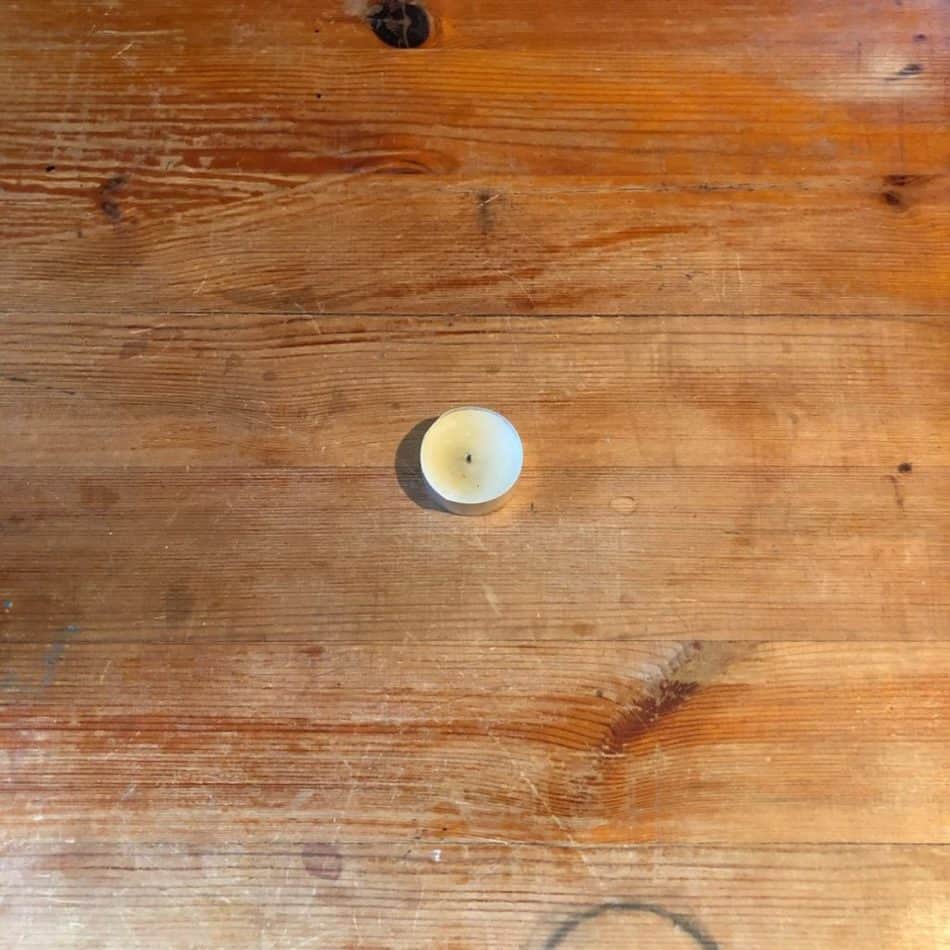
However, what if we put down a square mat and cover it with a round doily? What if we place a small bowl in the center, fill the bowl with whole coffee beans, and place the object in that? Then we have an eye-catching display.
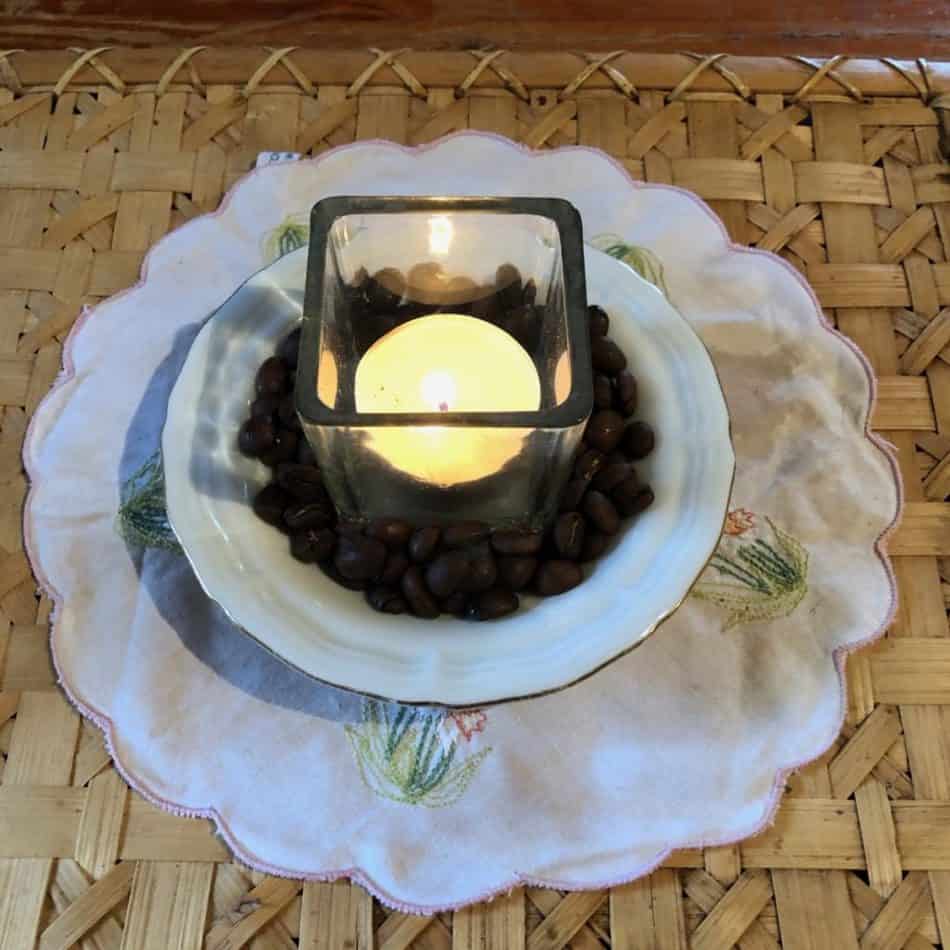
Coffee beans are also an attractive way to dress up a plain glass vase or pencil jar, turning them into useful conversation pieces. Pro tip: make cut flowers last longer by using a mixture of leftover coffee grounds and potting soil in the vase. It will look good and act as a room freshener, too.
Number 7: Jewelry
Those of you who are artistic types, and like to make jewelry, are in for a real treat with this idea. A coffee “bean” is, in reality, the seed of the coffee cherry. If we take roasted coffee beans and drill a small hole through the bean, we can treat it like any other bead. They are perfect for making eye-catching and unusual earrings, necklaces, and bracelets. You will want to coat them with some sort of urethane to make them last.
Number 6: Cooking with Coffee
From a classic tiramisu (ladyfingers soaked in espresso, topped with a custard and mascarpone filling) to a coffee crusted beef tenderloin (just as delicious as it sounds), coffee is a great way to elevate a dish to something special.
Try baking with it for scrumptious “Chocolate Coffee Toffee Crunch Muffins.” Toss some espresso powder into your pancake mix to jazz up breakfast. Even make coffee gelatin by replacing the water with brewed coffee.
While coffee also makes an excellent rub for red meats, it might be most useful as a “secret ingredient.” Because of its deep, smoky flavor, a tiny hint of coffee can add that “certain something” that guests will only identify as “special.” Try adding a touch in marinades, soups, chilis, and chocolatey desserts. I won’t tell!
Number 5: Mix Coffee with Booze
Okay, if you want to get technical this is actually drinking it, but it is most definitely not your “regular” morning cup. There are plenty of ways to use coffee and alcohol in tandem and there does seem to be something magical about the combination. But perhaps there is more science than “magic.” Caffeine appears to block the FEELINGS of the effects of alcohol but not the actual effects. Some people have an instinct about such things. It was in that spirit that a soon-to-be-famous supermodel – her identity has never been confirmed – asked for “something to wake me up and @#$%!^*! me up,” resulting in the invention of the Espresso Martini in 1980s London.
Many cultures have evolved their own coffee and alcohol beverages. In Italy, a Caffè corretto (coffee corrected) is an espresso with a small amount of grappa, a brandy distilled from the fermented residue of winemaking grapes. In Spain, a similar beverage is Carajillo. While that “a little something” in your coffee does not take a great stretch of the imagination to concoct, the fancier coffee cocktails take a little more effort. That Espresso Martini requires several ingredients and an ice shaker to pull off. Irish coffee requires a top layer of cream through which one drinks the coffee and Irish whiskey. Caffè del Marinaio (Coffee of the Sailors) requires a combination of rum, Sambuca, and the Kahlua-like Sport Coffee. Here’s the recipe if you are interested.
Bottoms up!
Number 4: Make Ink
Since getting a pen nowadays is as easy as popping into an office supply, convenience store, or gas station quick mart, it is easy to forget what an ordeal getting a writing instrument once was. After the search for and preparation of a goose feather, there followed the making of the ink. Lucky for us crafty folks, coffee can make a serviceable and artistic writing medium with a minimum of fuss.
In Procaffeination: A Coffee Lovers Dictionary (written by yours truly and available soon – just sign up for the email) there is a simple recipe for turning our favorite morning beverage into the next great American novel. All that is required is to brew a strong half-pot of coffee – the stronger the coffee, the darker the ink – which is then heated and reduced to a quarter-pot. Add a teaspoon of vinegar to make the color last and you are ready to start creating. Add a teaspoon of salt as a preservative if you want to save the unused portion for later. The addition of gelatin, gum arabic, or honey will create a thicker ink which might be more suitable for some fountain pens.
Number 3: Grow Mushrooms
Growing mushrooms can be tricky. Finding the right material to grow them in can be a struggle but used coffee grounds are an ideal medium; they are sterilized from brewing and are the perfect texture for mushrooms to grow. With little more than the grounds, a bucket, and some cellophane wrap, a personal crop of fungi can be grown in less than a month. Step by step instructions can be found in this video.
The process can even scale. In fact, a Paris company is harkening back to a long Parisienne mushroom tradition, dating back to the time of Louis XIV. And they are infusing it with a “green” twist. The company, UpCycle, is collecting over 10,000 lbs (over 4500 kg) per week of spent coffee grounds from the famous cafes of Paris – coffee that would otherwise end up in the trash – and turning it into over 1,000 lbs (over 450 kb) of oyster mushrooms that they sell for almost $8,000. That IS upcycling!
Number 2: Make the World a Better Place
Its origins are a bit cloudy, but Caffe Sospesa is an Italian term for an act that makes the world just a bit nicer.
“Suspended Coffee” is an old Neapolitan tradition where a customer pays for his or her coffee and also pays for one extra. The suspended coffee is then available at no charge to someone who otherwise could not afford it. The practice has spread to hundreds of coffee shops around the world. In fact, in the US it has morphed into the whole “Pay It Forward” movement. In 2014, the drive-thru at a Starbucks in St. Petersburg, Florida had more than 700 people over two days, pay for the orders in the car behind them.
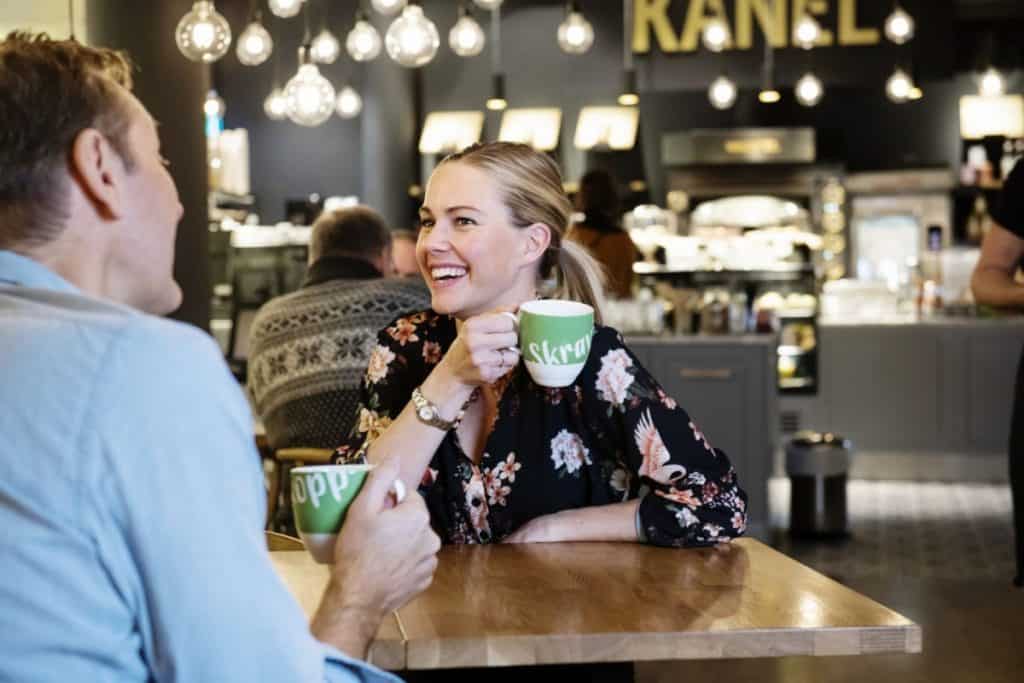
Random Acts of Kindness, which are not limited to coffee-based drinks, are a wonderful way to make our little corner of the world a little bit brighter.
Number 1: Coffee Enemas
This one was saved for last because of its general, knee-jerk “Ewww factor,” but putting brewed coffee “where the sun don’t shine” might just have serious health benefits. This practice first came to wide public attention back in the 1980s when beloved American actor, Michael Landon (Bonanza, Little House on the Prairie, Touched by an Angel) used it as part of his treatment after being diagnosed with pancreatic cancer. He made light of it on his last appearance on The Tonight Show with Johnny Carson. The full interview in VHS quality (skip to 5:00 for the coffee jokes) is here.
As far back as ancient Egypt, enemas have been used to relieve constipation and improve general health. As science progressed, enemas, including coffee enemas, were included in medical textbooks and coffee enemas were documented as delivering almost immediate improvement in some post-operative patients. Proponents believe that the benefits are derived from the stimulation of the liver and gallbladder to increase the flow of bile. This aids the liver in its primary function, detoxification. Detractors warn against electrolyte imbalances or risk of infection. In any case, talk to your doctor first.
If a humorous (and a bit gory) description of one man’s experience is of interest, you can read about it here. For a woman’s perspective – also funny and gory – with step-by-step instructions, try this one.
Bonus 1: Have Fun with the Kids
Our kids and grandkids love to play, and they love to create. Coffee can add a little something extra to playtime and might even spark the next wave of archeologists. Our first step is to make a modeling dough that looks like mud. There are many recipes online to help you make your own playdough at home. By replacing some of the flour with finely ground coffee you will achieve a color and texture that is perfect for plastic dinosaurs to roam on.
We can also help our little paleontologists make their own fossils by using an even easier recipe using coffee grounds, flour, salt, and a little cold coffee. Just press a sea shell, leaf, or any handy plastic figure into the soft material and let dry for 24 hours to result in a hard-as-stone custom fossil.
Stepping it up to the next level, you can make fossil-filled “stones” by adding sand to the mix and molding it into “rocks” around small items. After a few days of drying, they will be the perfect hardness to crack open with a small hammer, revealing the treasure inside.
Bonus 2: Make Coffee into Slurpable Spheres
This one is kind of cheating for two reasons: One, it does involve actually drinking the coffee and two, due to the travel involved, it is also extremely difficult for a regular coffee lover to achieve. It takes both skill and a very special venue in order to even attempt this. First, the coffee must be brewed. Then you have to float the coffee in spheres in the air in front of you before slurping it down. This is what US astronaut Jack Fischer did while on the International Space Station.
Conclusion
There are so many things you can do with coffee (above and beyond enjoying a morning cup). In fact, I have found so many that I will probably have to do a second installment on this topic!
How about using it in your hair to fight graying or baldness? Using it to deodorize? I have found ways of making unusual teas and jellies using the fruit of the coffee tree, making a snow grip for your tires in the winter and even smoking it! Spoiler Alert: That one isn’t all that great.
Keep checking back for more fun info and remember to sign up for the email newsletter which I promise I will someday send. Although I haven’t sent one yet, (surprise to me) today is the two-year anniversary of the first thing I wrote for the site. Maybe I’ll celebrate by sending one today!
Maybe not…
